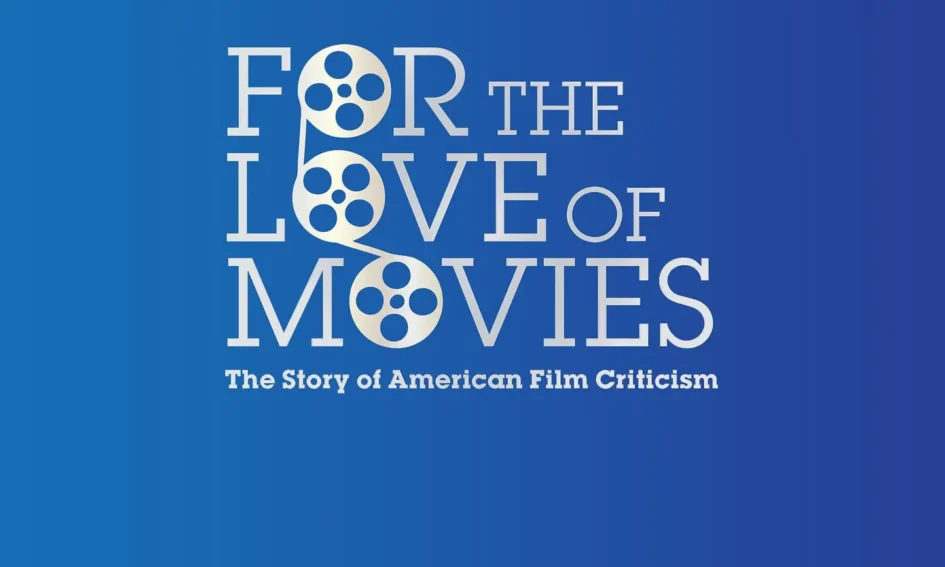Per Matt
Since the 95th Academy Awards takes place tonight, I thought it was the appropriate time to finally watch a documentary that has been impatiently awaiting my attention, sitting deep within my DVR. Released almost 14 years ago, Boston Phoenix critic Gerald Peary (now retired) breaks down the history of film criticism in America, with additional remarks from prominent critics to solidify his story.
Since this is a new millennium and there’s been countless groundbreaking techniques to improve the filmmaking process, I began to wonder: Do film critics still matter these days?
I caught For the Love of Movies: The Story of American Film Criticism when it aired at some point on Turner Classic Movies. Now, in my book, this is a channel that’s very easy to scroll through, often broadcasting some of the very best the medium has to offer. It brings an unofficial film-school education to just about anyone who has access to a television. That’s one of the reasons I became a very big fan of the network’s previous host, Robert Osborne, as well as its current TV personality, Ben Mankiewicz, whose knowledge is always welcome in my house.
According to Ben, “The doc provides an insider’s view of the job responsibility of a movie critic,” as it’s the first documentary to take a deep dive into film-criticism history, exploring the role critics have played in how we look at films. That’s a pretty detailed description in as few words as possible — and it’s legit. It’s also one of many traits a critic must utilize efficiently.
How we watch movies, today, is just as important as what we say about them, and this film breaks down the medium into multiple eras. Beginning with The Dawn of Criticism (1907-1929), trade papers were created to comment on the nascent medium, a decade after the birth of cinema. Frank E. Woods detailed what should be included in a movie review, and that the silent era of films had the potential of being art. Others would expand upon this point of view.
“The arrival of film was a key moment in the history of human consciousness.”
Cult Critics and Crother (1930-1953) divided critics into two camps: There were the pleasant people of the audience and the intellectual writers of small-circulation magazines. Some were influenced by high, modernist European releases, some preferred hard-boiled cynicism, and others chose jazz and modern paintings. One thing is definitely clear: The best films are the most personal ones, so the difference in opinions is many.
The “Auteur Theory” is introduced, where the director’s spirit overwhelms everything else (including writing, acting, etc.) in Auteurism and After (1954-1967), followed by When Criticism Mattered (1968-1980), TV, Fans and Videotape (1975-1995) and the Digitial Rebellion (1996-?).
For the Love of Movies is a somewhat cynical take from Writer-Director Peary, as the print medium’s importance faded, and with it, the need to read certain publications’ writers, but it also dawns a new era where everyone’s a critic, but nobody’s really held accountable for what they’re writing. Originally released in 2009, it depicts “a world taken over by the movies,” but often cultural experts are mistaken as historians.
While the doc initially attempts to define the necessary credentials in order to be considered a critic, it eventually side-steps the topic. As the relationship of critics to Hollywood is touched upon, it’s also noted that some critics even influenced the Academy Awards, such as Bosley Crowther, of the New York Times and an early president of the New York Film Critics. That’s a lot of power!
Roger Ebert, Elvis Mitchell and Harry Knowles are just a few of the journalists, critics and writers included in the doc. As films can have different meanings to different people, who gets to decide whether one person’s opinion matters more than others? Does it depend on the writer’s schooling, experience, or simply the number of their followers? Some people live to see the next big thing on the big screen, while others just want the attention with very bad takes. Back in the day, print publications were recognized for their credibility more than their individual reviewers, but that was also before the Internet Age.
I’m absolutely a cinema aficionado whose interest in modern cinema’s influences often outweighs its current releases. This leads me to watching and re-visiting many classics, along with quite a few B-movies. If we don’t have an idea of where the industry came from, seeing its future possibilities feels stunted.
Some are calling this the Golden Age of Cinema, with streaming services offering so many more options than ever to find the next great filmmaker. I think it’s truly a time for the next great film critic to really show what they’ve got, possibly topping the careers of Andrew Sarris and Stanley Kauffmann, who continued their roles for 50 years apiece.
